Josephine Kaleilehua Lindsey
Nā pali kāʻeʻaʻeʻa o Hāmākua
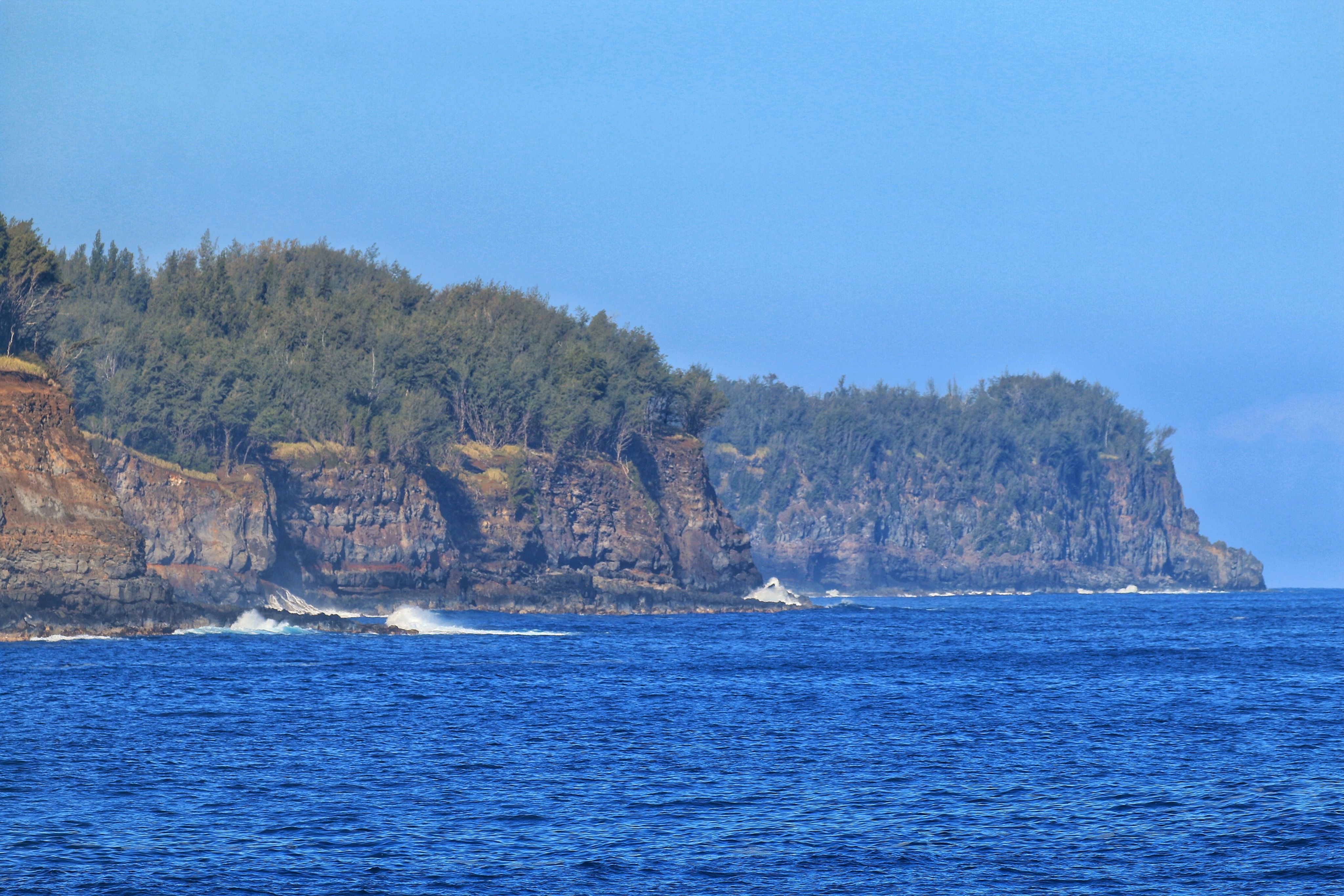
Mānaleo Series
These short clips of native speakers on Ka Leo Hawaiʻi talking about their lives and practices are invaluable windows into our past, our language, and ourselves. Our mahalo kūhohonu goes out to Larry Kimura and Puakea Nogelmeier for their foresight in preserving the voices of these hulu kupuna.
Listen and read along:
1. Press "listen in browser" or the orange arrow on the sound file below (make sure your sound is up).
2. Scroll down and read along in the language of your choice.
3. Repeat as needed.
4. Remember to select "listen in browser" to stay in this site.
Josephine Kaleilehua Lindsey talks about the descending the treacherous cliffs of Hāmākua to fish with her uncle.
Kaleilehua Lindsey (KL): ʻEwalu oʻu makahiki i ia wā, pēlā wau i ʻike ai i kēlā pali kāʻeʻaʻeʻa o Hāmākua.
Puakea Nogelmeier (PN): ʻAe.
KL: A ʻōlelo ʻia ai haki ka ʻāʻī, a no ka mea he kiʻekiʻe. Ma ke kaula ʻoe e iho ai i lalo. He ʻinoʻino ke ʻano o ka pali, ʻo ka hele ʻana.
PN: A pehea, nākiʻi ʻia kēlā kaula a puni ka ʻōpū?
KL: ʻAʻole. Paʻa nō ʻoe i ke kaula. A iho mālie i lalo. Iho, komo i loko, hemo i waho. I loko, i waho. A hoʻolewalewa a hiki aku, a pau a komo aku. He hāiki ke ʻano, ke ʻano o ka hele ʻana o ka meheu i lalo. Ā i ke kāpili ʻana i lalo i ka honua.
PN: Aī! A ke pae aku ʻoe i lalo.
KL: Ke kū aku ʻoe i lalo, a laila, a hele aku ʻoe e hana i kau mea e makemake ai.
PN: Aī. He aha ka hana ke pae aku ʻoe ma ka pilikai?
KL: Well, ka mea i hiki iaʻu. ʻO koʻu uncle, ʻo ia ka mea hoʻolei i ka ʻūpena. Hele au nānā i ka wā o ka leho, kau ka leho, a hele au e hana. A kuʻi ʻopihi nō hoʻi.
PN: ʻAe.
KL: Pipipi. Nui nā ʻano iʻa like ʻole e hiki ai iā ʻoe ke hana.
PN: ʻAe. Kēlā ʻano wahi hele ʻole ʻia e kānaka, ʻeā?
KL: ʻAʻole hele ʻia e ke kanaka no ka mea, no ka pali. Makaʻu nā poʻe ke hele i ka pali.
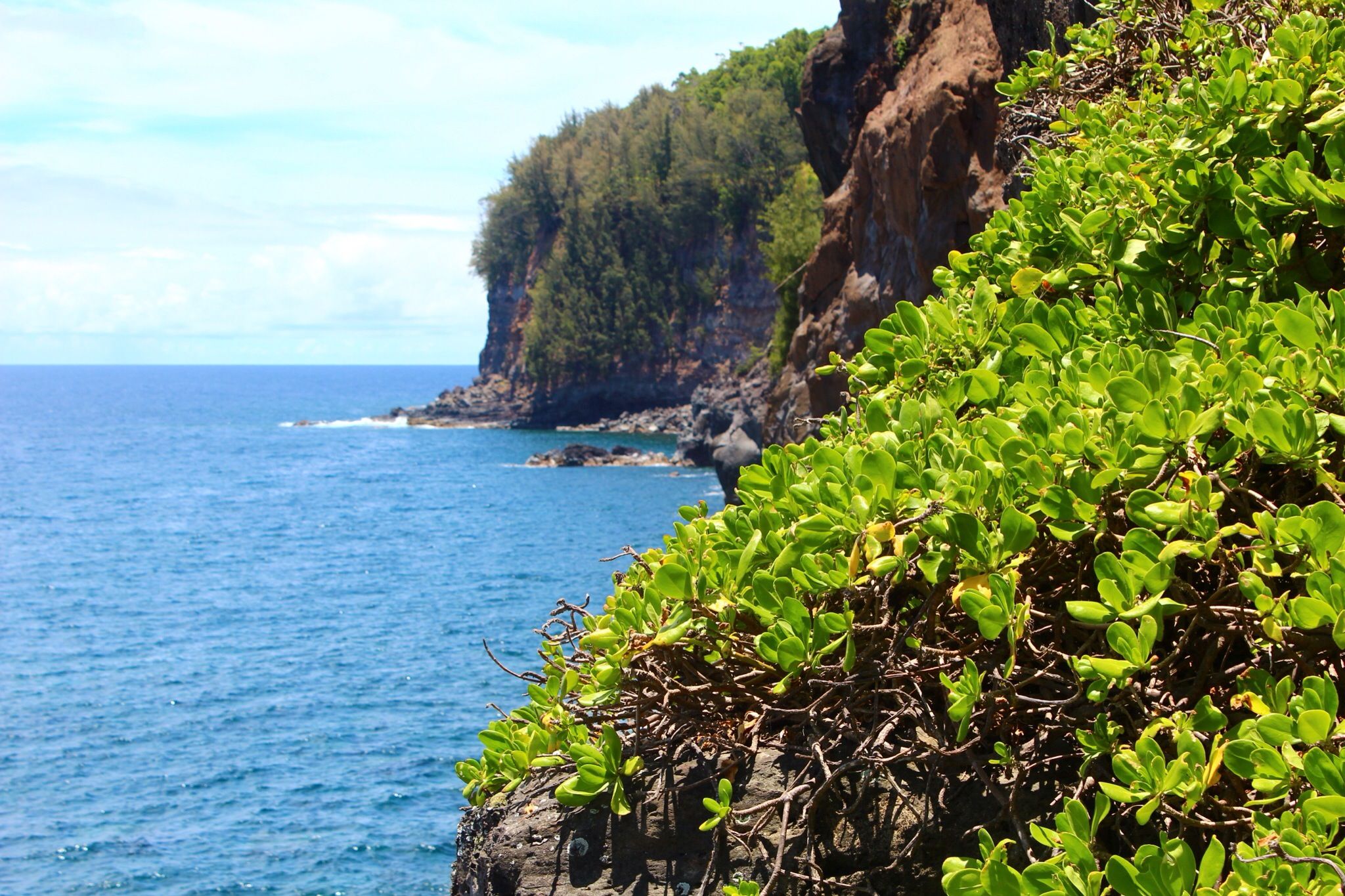
Hāmākua i ke ala ʻūlili. Pic: Noʻeau Peralto
Unuhina (Translation):
Kaleilehua Lindsey (KL): I was eight years old, that is when I came to know the Hāmākua cliffs scaled only by experts.
Puakea Nogelmeier (PN): Yes.
KL: Of which it is said one can break their neck because it is so high. You have to descend by rope. It’s treacherous to navigate those cliffs.
PN: So how would you do it—was the rope tied around your waist?
KL: No. You hold onto the rope. And you descend slowly. You go into and come out [of the irregular cliff face]. In, out. You dangle until you reach the next section, then you go into that. It’s a very narrow path that the feet track down. Until you touch down onto the ground.
PN: Wow! And then you reach the bottom.
KL: When you get down there then you can do whatever activity it is you want.
PN: Ahh. What did you do once you reached the shore?
KL: Well, whatever I could do. My uncle, he would throw net. I would go and look for leho (cowry), when the leho were happening, I would go and get them. I’d get ʻopihi too.
PN: Yes.
KL: Pipipi. There’s all sorts of seafood you can get.
PN: Yes. This sort of place that isn’t traversed by people, yeah?
KL: People don’t go there because of the cliff. People get scared when they go to the cliff.
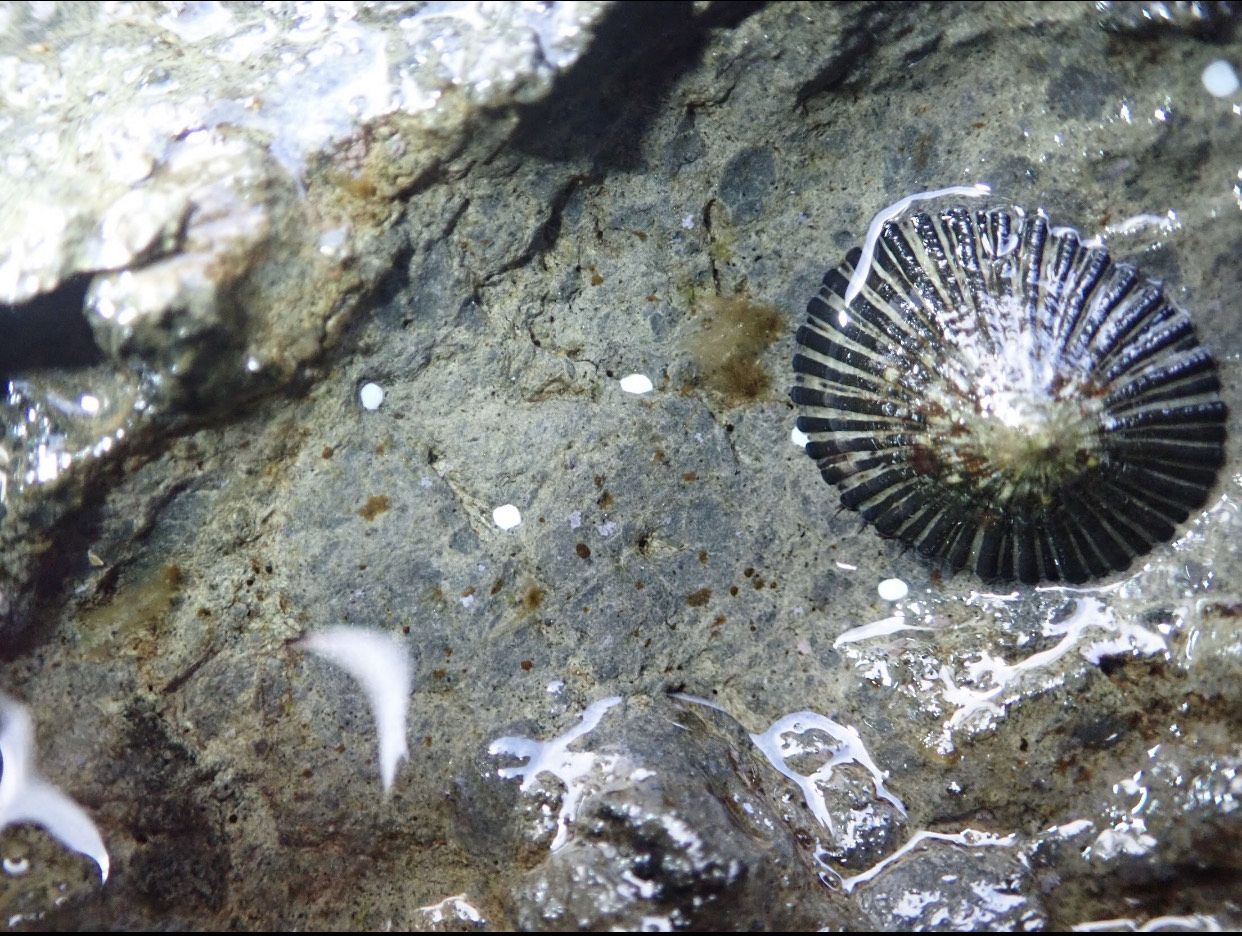
Ka ʻopihi makaiauli. Pic: Uakoko Chong
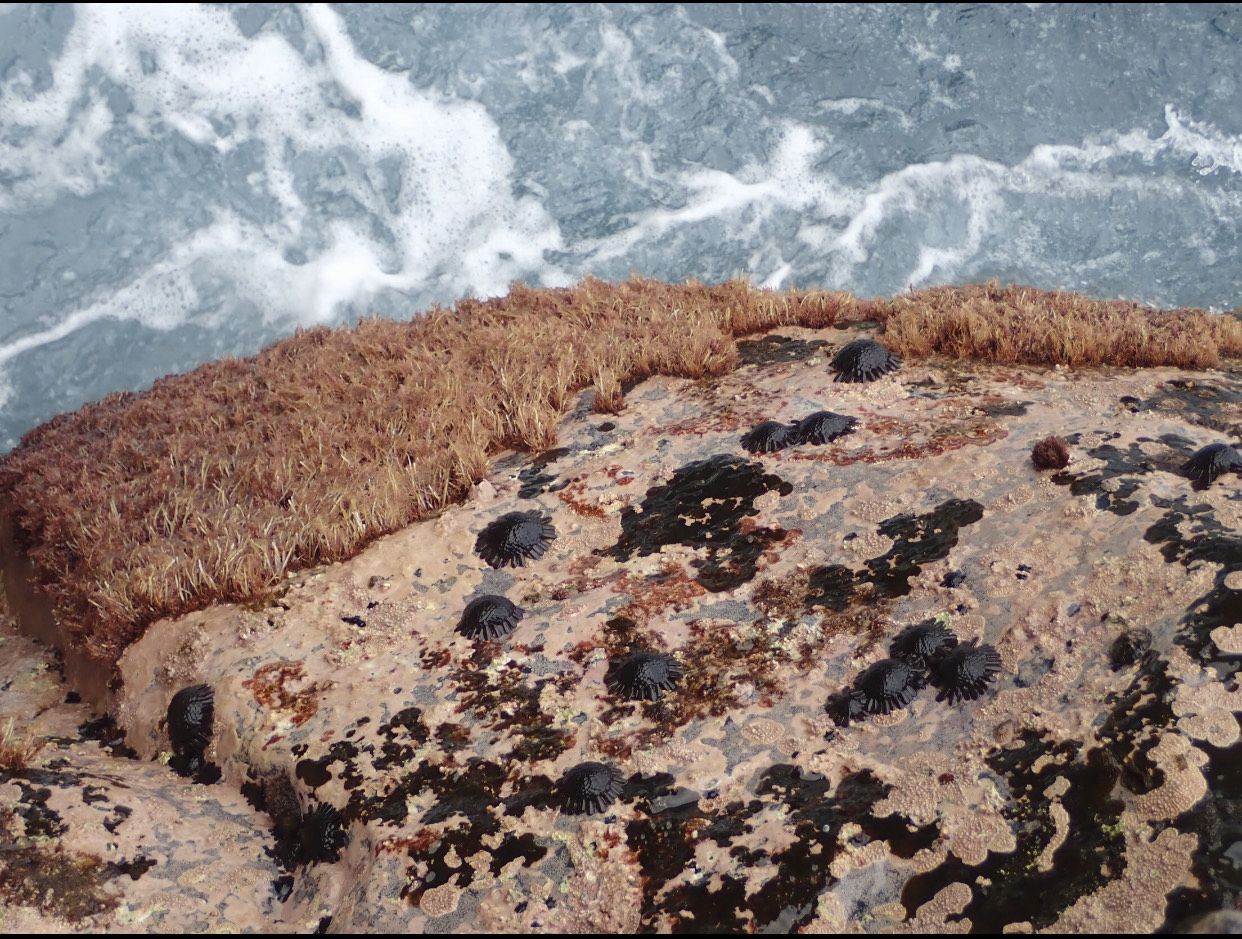
Ka uluwehi o ke kumu pali kahakai. Pic: Uakoko Chong

Hāmākua i ke ala ʻūlili. Pic: Noʻeau Peralto
Hāmākua i ke ala ʻūlili. Pic: Noʻeau Peralto

Ka ʻopihi makaiauli. Pic: Uakoko Chong
Ka ʻopihi makaiauli. Pic: Uakoko Chong

Ka uluwehi o ke kumu pali kahakai. Pic: Uakoko Chong
Ka uluwehi o ke kumu pali kahakai. Pic: Uakoko Chong
He ʻĪnaʻi
Josephine Lindsey was a remarkable woman. She was taken on by her maternal grandparents as a "luhi" which is very different than a hānai. For Joesphine, this meant all the daily chores of life were hers. She talks about going sleep at 2am and being awoken at 4am to resume her duties. The amount of hard physical work she did is foreign to most people today.
Joshephine's daily chores included chopping and stacking firewood, hauling water, and all manner of farm work on their three acres of land in Kaumōʻali (near Kalopā), most of which was in cultivation. If she didn't finish all her chores, she wasn't allowed to walk the eight miles to school in Paʻauilo, which was considered a luxury to be indulged in only when all her morning duties were done.
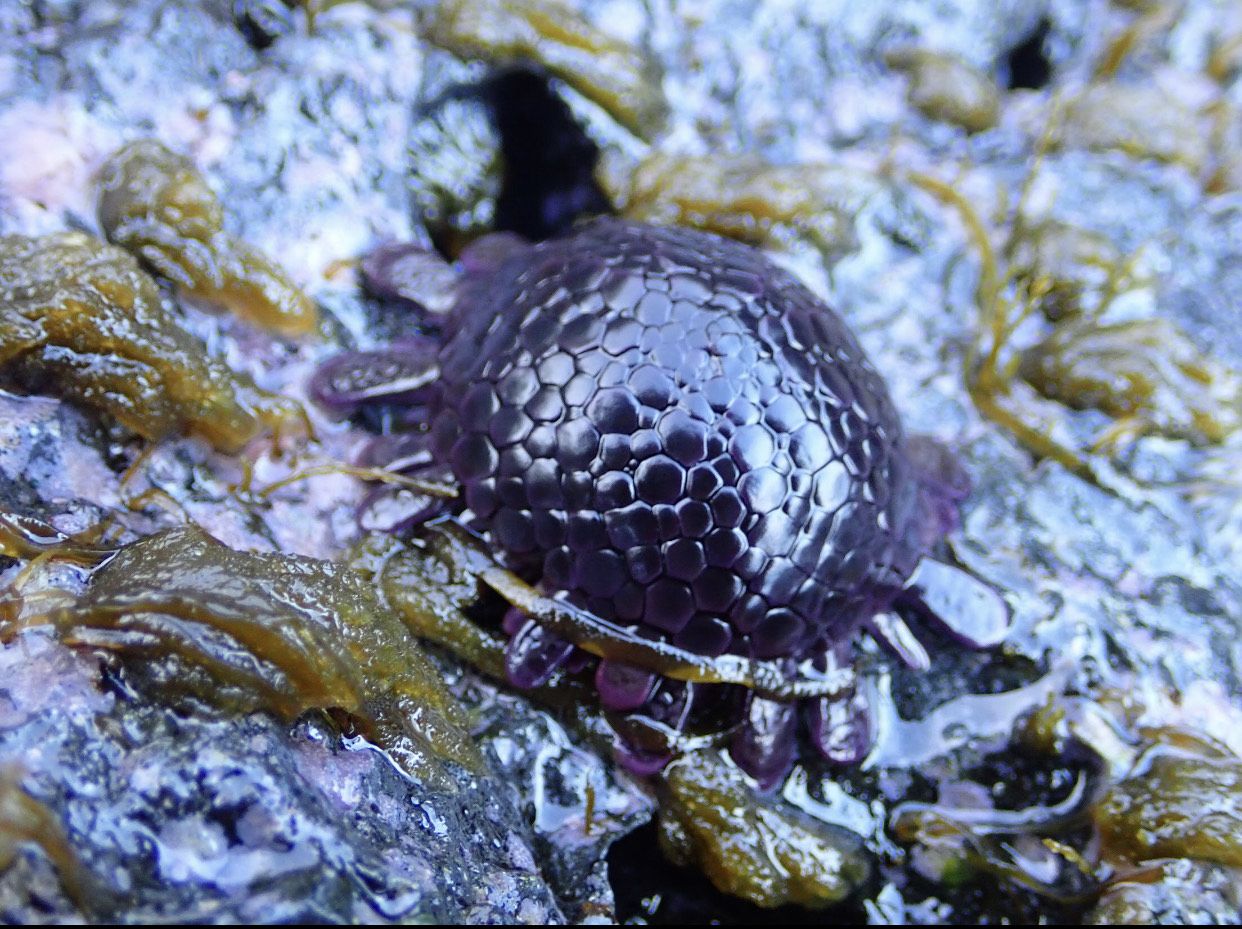
Ka hāʻukeʻuke me ka limu hulu ʻīlio. Pic: Uakoko Chong
Going to the pali kāʻeʻaʻeʻa with her uncle to fish and gather seafood is one of the more surprising parts of this particular interview. At eight years old, she began going down the rope with her uncle, descending a cliff so treacherous that folks had broken their necks (and likely died) trying to get down it.
She learned to clean all different sorts of fish and sea creatures that her uncle caught, including puhi ūhā, which he said what the best eel for eating. Joesphine liked it dried: "Momona ka puhi ke kaulaʻi ʻia."
The intimate knowledge of ʻāina and kai with which she was raised is quite astounding, as well as her own capacity for physical work, which she was taught to do since the time she could walk.
Life is so much different in this modern era when most of us have little to no connection to where our food and water come from. Kupuna like Mrs. Lindsey remind us of the importance of turning our hands down to the soil and the ocean and maintaining those skills of farming and fishing that our ancestors were so famous for, skills with which they not only survived, but thrived.
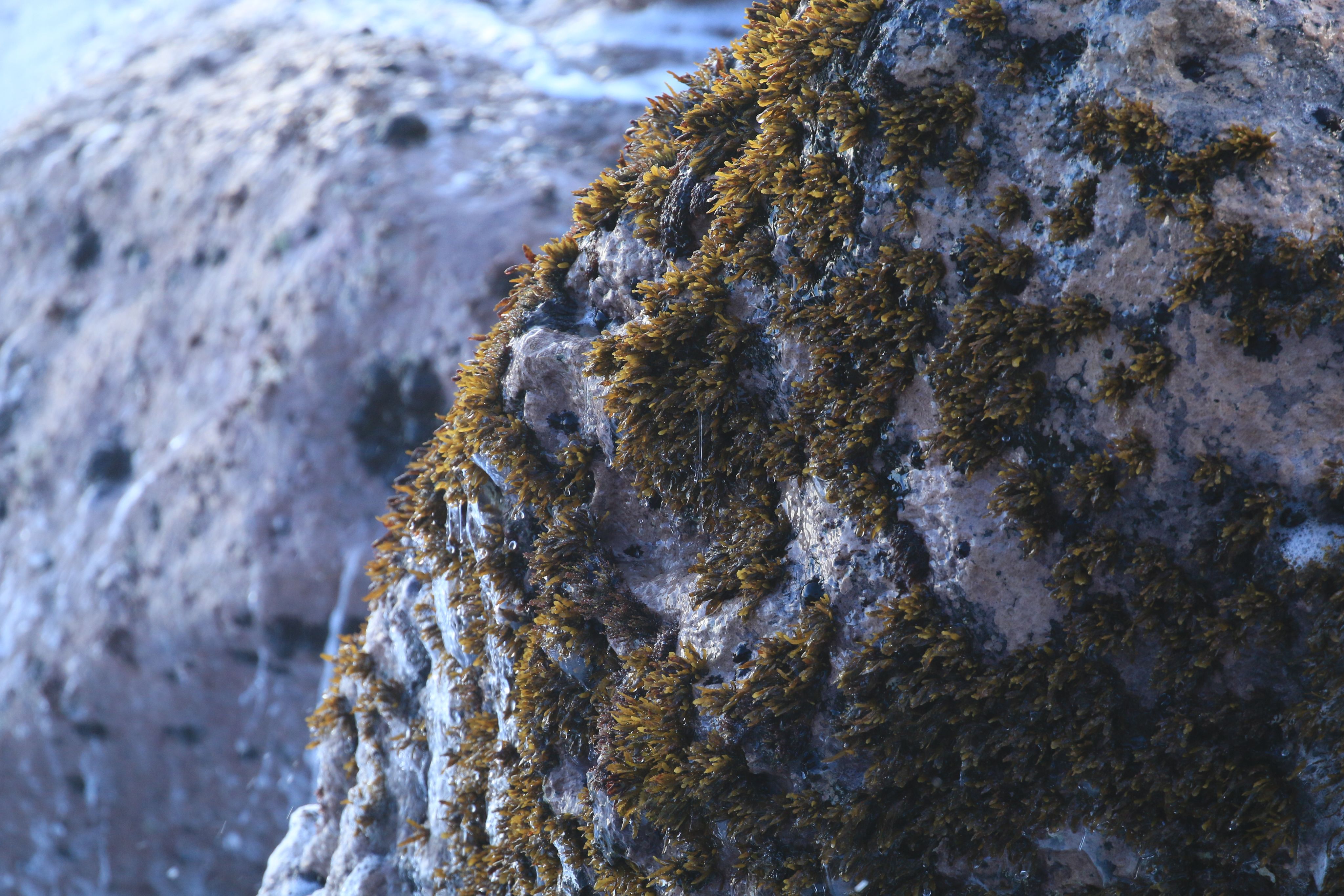
Ka uluwehi o ke kumu pali kahakai. pic: Noʻeau Peralto
Thriving once again as kanaka, through our connections to ʻāina and kai, is at the heart of the mission of hui Mālama i ke Ala ʻŪlili (huiMAU), a non-profit collective of ʻohana who focus on reconnecting to ʻike kupuna, systems and practices that are regenerative and cultivate abundance, collective health and well-being in all senses: physically, intellectually, and spiritually.
Towards their goals of food sovereignty and restoring abundance they are transforming 80 acres of former sugar cane land into an ʻulu grove to feed their community now and into the future. This goes hand in hand with the monitoring of iʻa (sea creatures and plants) on their coastlines. These initiatives bring honor to the lifeways and the ʻike of people like Mrs. Lindsey, lifeways we are once again turning to for the ola they provide.
Read about these efforts ma ka ʻōlelo Hawaiʻi in this wonderful article written by Uakoko Chong, ʻĀina Education Coordinator at huiMau. You can also learn more about this exemplary hui on their website, which is rich in resources and ʻike kupuna.
Mahalo to Uakoko and huiMau's Executive Director, Noʻeau Peralto, for the beautiful photos featured here.
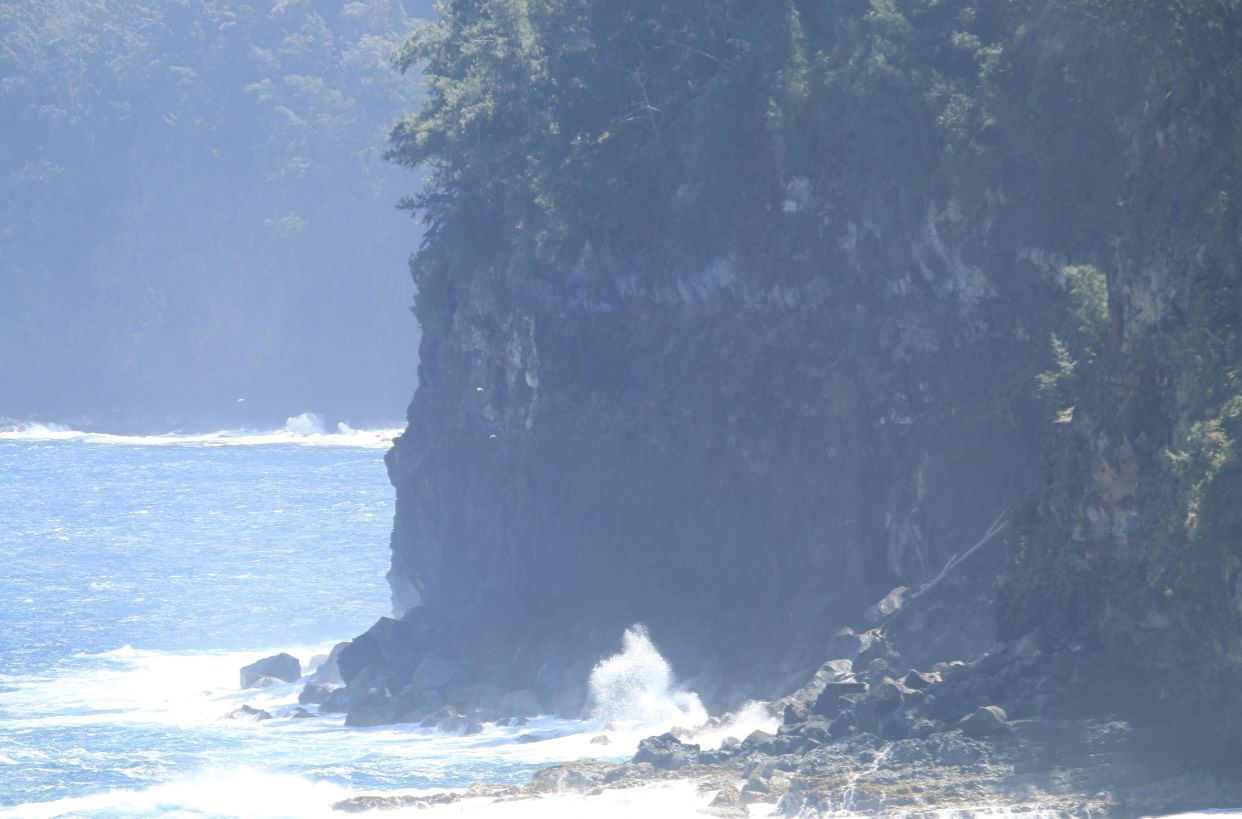
Nā pali lele koaʻe o Hāmākua. Pic: Noʻeau Peralto
Na Hina Kneubuhl i kākau a hoʻonohonoho i kēia moʻolelo.
These pieces are all working interpretations. Should you see a kuhihewa, kiko hewa, or have any sort of manaʻo to share, please email kauamelemele@gmail.com - Mahalo!
Click here to access the full recording on the University of Hawaiʻi's Evols website.

Ka hāʻukeʻuke me ka limu hulu ʻīlio. Pic: Uakoko Chong
Ka hāʻukeʻuke me ka limu hulu ʻīlio. Pic: Uakoko Chong

Ka uluwehi o ke kumu pali kahakai. pic: Noʻeau Peralto
Ka uluwehi o ke kumu pali kahakai. pic: Noʻeau Peralto

Nā pali lele koaʻe o Hāmākua. Pic: Noʻeau Peralto
Nā pali lele koaʻe o Hāmākua. Pic: Noʻeau Peralto
